Iron Timur. Part of 2
The last Genghiside in the Maverannahr part of the Jagatai ulus, Kazan Khan, died in the internecine war, which was led by a supporter of the old traditions, Bek Kazagan (in 1346). The winner did not accept the khan's title: confining himself to the rank of emir, he brought up front khans from the Genghis Khan clan at his court (later Timur and Mamai went this way). In 1358, Kazagan was killed on a hunt and Maverannahr plunged into a state of complete anarchy. Shakhrisyabz submitted to Haji Barlas, Khojent to the head of the Jelaer clan Bayazed, Balkh to the grandson of Kazagan Hussein, and numerous small princes ruled in the mountains of Badakhshan. As a result of these events, Maverannahr turned out to be the prey of the Mogolistan Khan Toklug-Timur, who in 1360-1361 invaded this country. And here on historical the scene was made by our hero - the son of the Barlas Bek Taragay Timur.
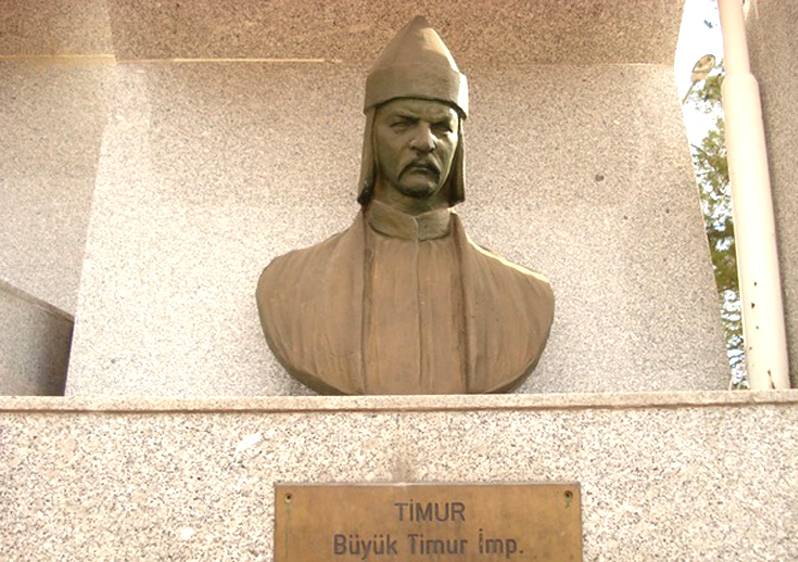
Timur. Bust conqueror
According to an ancient legend, Timur was born gray and with a piece of dried blood in his hand. It happened that 25 736 shaban, i. April 9 (according to other data - May 7) 1336 was in the village of Khoja Ilgar near the town of Shakhrisabs. Since childhood, Timur loved horses, perfectly shot from a bow, early showed the qualities of a leader and therefore already in his youth was surrounded by his peers.
“They say,” wrote the ambassador of the Castilian king Henry III Ruy González de Claviho, “that he (Timur), with the help of his four or five servants, began to take away from the neighbors one day a ram, another day a cow”.
Gradually, a whole squad of well-armed people gathered around a successful young Bek-robber, with whom he attacked the lands of his neighbors and merchants' caravans. Some sources (including Russian chronicles) claim that it was during one of these raids that he was wounded in his right arm and right leg. The wounds healed, but Timur remained forever lame and got his famous nickname - Timurleng (limp) or, in European transcription, Tamerlane. However, in fact, this wound was received by Timur much later. Armenian chronicler Thomas Metsopsky, for example, reports that Timur "was wounded in 1362 in a battle with Turkmen in Seistan, was wounded by two arrows." So it was. Many years later (in 1383) Timur met the leader of his enemies in Sistan and ordered to shoot him with bows.
The Russian chronicle refers to Timur Temir-Aksak ("Iron Chromzem"), claiming that he is "an iron smith by the hand" and even "forged a broken leg with his iron". Here the Russian author associates himself with Ibn Arabshah, the author of the book “The Miracles of Predestination in the Events (Lives) of Timur,” who also mentions this profession as the future ruler of half the world.
In May-June, the 1941 by M.Gerasimov attempted to create a sculptural portrait of Tamerlan on the basis of a study of the structure of his skeleton. For this purpose, Timur's tomb was opened in the Gur-Emir mausoleum. It turned out that the growth of the conqueror was equal to 170 cm (at that time people of this height were considered tall). Based on the skeleton structure, it was concluded that Tamerlane was indeed wounded by arrows in his right arm and leg, and traces of numerous bruises were preserved. In addition, it was found that Tamerlan’s right leg was affected by the tuberculosis process and the disease probably caused him great suffering. The researchers suggested that when riding a horse, Timur should have felt better than when he walked. When examining the bones of the pelvis, vertebrae and ribs, it was concluded that Tamerlane's torso was skewed in such a way that the left shoulder was higher than the right, but this should not have affected the proud landing of the head. At the same time, it was noted that at the time of death Timur had almost no signs of senile phenomena related to the general aging of the body, and the biological age of the 72-year conqueror did not exceed 50 years. The remains of the hair led to the conclusion that Timur had a small thick beard of a wedge-shaped form and long mustache, hanging loosely over the lip. Hair color - red with gray. The research data coincides with the memories of Timur’s appearance left by some contemporaries: Thomas Metsopsky: “The Lame Timur ... from Chingiz’s Offspring on the Female Line. Ryzheborod, tall and unusually strong” (remember that the Mongols, before they mixed with outnumbered by their nomads in Asia, they were tall people, red-bearded and blue-eyed).
Ibn Arabshah: “Timur was well built, tall, had an open forehead, a big head, a strong voice, and his strength was not inferior to his courage; a bright blush enlivened the whiteness of his face. He had broad shoulders, thick fingers, long hips, strong muscles He wore a long beard, his right arm and leg were mutilated. His look was rather affectionate. He neglected death, and although he didn’t have enough for 80 years when he died, he still hadn’t lost his genius or his fearlessness. He was the enemy of lies, jokes did not amuse him ... He loved Shiva is the truth, no matter how it was cruel. "
Spanish ambassador Clavijo, who saw Timur shortly before his death, reports that the “senor's” limp was invisible in direct body position, but his eyesight was very weak, so he could barely see the Spaniards very close to him. Timur's finest hour came in 1361. He was 25 years old when Khan Mogolistan, Toklug-Timur, met no resistance and seized the lands and cities of Maverannakhr. The ruler of Shahrisabz, Hadji Barlas, fled to Khorasan, but Timur preferred to enter the service of the Mongol khan, who transferred him to the administration of Kashka-Darya vilayet. However, when Toklug-Timur, having left his son Ilyas-Khoja in Maverannakhr, left for the Mogulistan steppe, Timur ceased to reckon with the nomads and even freed 70 descendants of the prophets Mohammed, who were imprisoned in the north by aliens. Thus, Timur from an ordinary Bek-robber became one of the independent rulers of Maverannakhr and gained popularity both among devout Muslims and among patriotic compatriots. At this time, he became close to the grandson of Bek Kazagan Hussein, whose sister he married. The main occupation of the Allies was the campaign against the neighbors, whose goal was the subordination of the new areas of Maverannahr. Such behavior of Timur naturally caused discontent with Khan Mogolistan, who ordered his death. This order fell into Timur’s hands and in 1362, he was forced to flee towards Khorezm. On one of the nights of that year, Timur, his wife and Emir Hussein were captured by the Turkmen leader Ali Bey, who threw them into a dungeon. The days spent in captivity did not pass without a trace: "While in prison, I firmly decided and made a promise to God that I would never allow myself to put anyone in prison without settling cases," Timur wrote many years later in his Autobiography ". Through the day's 62, Timur received a sword from the guards he had bribed:
"With this weapons in my hands, I rushed upon those guards who did not agree to set me free, and put them to flight. I heard cries around me: “I ran, I ran,” and I was ashamed of my deed. I immediately went straight to Ali-bek Dzhany-Kurbani and he ... felt respect for my valor and was ashamed (Autobiography) .
Ali-bey did not argue with a man who makes a complaint, waving a drawn sword. Therefore, Timur "soon left there accompanied by twelve horsemen and went to the Khorezm steppe." In 1365, the new Khan of Mogolistan, Ilyas-Khoja, went on a campaign against Maverannahr. Timur and Hussein came to meet him. At the time of the battle began a heavy downpour and the Allied cavalry lost maneuverability. The “mud battle” was lost, Timur and Hussein fled, opening the way for the steppe inhabitants to Samarkand. The city had neither walls, nor a garrison, nor military leaders. However, among the residents of the city there were a lot of seberdars - "gallows", who asserted that it was better to die on the gallows than to bend back before the Mongols. At the head of the national militia were the student of the Maulana Zadeh madrasa, the clawler Abu Bakr and the archer of the bow Hurdek and Bukhari. Barricades were erected on the narrow streets of the city in such a way that only the main street remained free for passage. When the Mongols entered the city, arrows and stones fell on them from all sides. Having suffered heavy losses, Ilyas-Khoja was forced to first retreat, and then completely leave Samarkand without receiving any ransom or loot. Upon learning of an unexpected victory, Timur and Hussein entered the spring of next year in Samarkand. Here they treacherously captured the leaders of the seberders who believed them and executed them. At the insistence of Timur, only Mowlana Zadeh was saved. In 1366, friction arose between the allies. It began with the fact that Hussein began to demand from the associates of Timur large sums of money that were spent on the conduct of the war. Timur took these debts on himself and, in order to pay off his creditors, even sold his wife’s earrings. This confrontation reached its apotheosis for 1370 and resulted in the siege of Hussein’s city of Balkh. To surrender to Hussein, Tamerlane promised only life. He really did not kill him, but did not protect him from the blood enemies, who soon saved Timur from his former comrade. From the harem of Hussein, Timur took four wives for himself, among them was the daughter of Khan Kazan, Sarai Mulk-Khanum. This circumstance gave him the right to the title of "Khan's son-in-law" (gurgan), which he carried throughout his life.
Despite the fact that after the death of Hussein, Timur became the actual owner of most of Maverannahr, he, taking into account the traditions, allowed him to choose one of the descendants of Jagat, Suyurgatamysh, as khan. Timur was a barlas, perhaps, therefore, representatives of another Mongol tribe of Maverannakhr (living in the region of Khojent) Jelayers expressed disobedience to the new emir. The fate of the rebels was sad: the ulus of the Jelairans ceased to exist, its inhabitants were resettled throughout Maverannahr, and gradually they were assimilated by the local population.
Timur easily managed to subdue the land between the Amu-Darya and Syr-Darya, Fergana and Shash region. It was much harder to return Khorezm. After the Mongols conquered this area was divided into two parts: Northern Khorezm (with the city of Urgench) became part of the Golden Horde, the Southern (with the city of Kyat) - into the Dzhagatai ulus. However, in the 60 of the XIII century, North Khorezm managed to emerge from the Golden Horde, moreover, the ruler of Khorezm Hussein Sufi also captured Kyat and Khiva. Considering the capture of these cities illegal, Timur demanded to return them. The hostilities began in 1372 and by the time of 1374 the city of Khorezm recognized the authority of Timur. In 1380, Tamerlane conquered Khorassan, Kandahar and Afghanistan, 1383 turned to Mazanderand, from where Timur's troops headed for Azerbaijan, Armenia and Georgia. This was followed by the seizure of Isfagani and Shiraz, but then Timur learned that Khorezm, which had entered the orbit of his interests, attracted the attention of the new ruler of the Golden Horde. The ruler of this was Khan Tokhtamysh, who became famous for burning Moscow just two years after the Battle of Kulikovo. The Western (Golden) and Eastern (White) Hordes were integral parts of the ulus of the eldest son of Chinggis Juchi. This division was connected with the Mongolian traditions of organization of the army: the Golden Horde supplied the soldiers of the right wing from among its population, the White Horde supplied the soldiers of the left wing. However, the White Horde soon became isolated from the Golden One, and this caused numerous military conflicts between the descendants of Juchi.
In the period from 1360-1380. The Golden Horde experienced a protracted crisis ("great confusion") associated with a permanent civil war, in which both the mediocre Chingizids and the rootless, but talented adventurers took part, the most prominent of which was Temnik Mamai. In total for 20 years in Sarai 25 khans changed. It is not surprising that the ruler of the White Horde, Uruskhan, decided to take advantage of the apparent weakness of the western neighbors to unite the entire former ulus of Jochi under his rule. This worried Timur, who captured a piece of the Golden Horde territory and now sought to prevent the strengthening of the northern nomads. The Russian chroniclers, who traditionally painted Temir-Aksak with black colors, did not even suspect what a powerful ally appeared in Russia in 1376. He did not know anything about his Russian allies and Timur. It was just that that year Tsarevich Chingizid Tokhtamysh fled from the White Horde and, with the support of Timur, opened military actions against Urus Khan. The commander Tokhtamysh was so unimportant that even having at his disposal the magnificent Timur troops, he twice suffered a crushing defeat from the army of the steppe inhabitants of Urus Khan. The matter went smoothly only when Tamerlane himself marched, thanks to whose victories in 1379, Tokhtamysh was proclaimed Khan of the White Horde. However, Tamerlane made a mistake in Tokhtamysh, who immediately showed his ingratitude, becoming an active follower of the policy of the enemy Timur - Urus-Khan: taking advantage of the weakening of the defeated Maulia in the Kulikovo battle, he easily defeated the Golden Horde troops on Kalka and, having seized power in Sarai, almost completely restored ulus Juchi.
As already mentioned, Timur was a consistent enemy of all nomads. L.N.Gumilyov called him "the paladin of Islam" and compared with the last Khorezm Shah's son, the frantic Jalal ad-Din. However, none of the opponents of the all-powerful emir even remotely looked like Chinggis Khan and his famous comrades. Timur started from battles against Ilyas-Khoji, and then, after the khan was killed by the emir Kamar ad-Din, he made six campaigns against the usurper, mercilessly ruining the camp and stealing cattle, thus condemning the steppe inhabitants to death. The last campaign against Qamar ad-Din was made in 1377. Next in line was Tokhtamysh, whose head was spinning from success, and who clearly overestimated his capabilities. Having seized the throne of the Golden Horde in 1380, brutally ravaged the Ryazan and Moscow lands in 1382, having organized trips to Azerbaijan and Transcaucasia in 1385, Tokhtamysh in 1387 hit the former patron's possessions. Timur was not in Samarkand at that time - from 1386. his army fought in Iran. In 1387 was Isfahan (in which, after an unsuccessful uprising, towers were built from 70 000 human heads) and Shiraz (where Timur had a conversation with Hafiz, which was described above) were taken. Meanwhile, the troops of the Golden Horde, countless as raindrops, passed through Khorezm and Maverannakhr to Amu-Darya, and many residents of Khorezm, especially from the city of Urgench, supported Tokhtamysh. The rapid return of Timur caused a panic in the ranks of the Horde troops, dispersed over a vast territory: they fled, leaving Khorezm to the mercy of fate. In 1388 was Urgench was destroyed, barley was sown at the site of the city, and residents were relocated to Maverannahr. Only in 1391, the Timur ordered to restore this ancient city and its inhabitants were able to return to their homeland. Having settled with Khorezm, Timur in 1389 overtook Tokhtamysh near the lower Syr-Darya. The troops of the Golden Horde consisted of Kipchaks, Circassians, Alans, Bulgarians, Bashkirs, residents of Kafa, Azov and Russians (among others in the army of Tokhtamysh, Suzdal Prince Boris Konstantinovich was expelled by nephews from Nizhny Novgorod). Being defeated in several battles, this army fled to the Urals. Timur, on the other hand, deployed his troops to the east and dealt a crushing blow to the Irtysh nomads, who attacked his state at the same time as the Horde. At the height of the events described (in 1388), Khan Suyurgatmysh died and his son Sultan-Mahmud became the new nominal ruler of Maverannakhr. Like his father, he did not play any political role, did not intervene in Timur’s orders, but was respected by the ruler. As a military leader, Sultan Mahmud participated in many military campaigns, and in the battle of Ankara he even captured the Turkish Sultan Bayazid. After the death of Sultan Mahmud (1402), Timur did not appoint a new khan and minted coins on behalf of the deceased. In 1391 was Timur launched a new campaign against the Golden Horde. On the territory of modern Kazakhstan, at the mountain Ulug-tag, he ordered to inscribe on the stone that the sultan of Turan Timur with the 200-thousandth army marched on Tokhtamysh’s blood. (In the mid-twentieth century, this stone was discovered and is now stored in the Hermitage). 18th of June 1391
Tokhtamysh was counting on the help of his vassal, the Moscow prince Vasily Dmitrievich, but fortunately for the Russian troops, they were late and returned home without loss. Moreover, taking advantage of the weakening of the Golden Horde, the son of Dmitry Donskoy, in 1392, knocked out his enemy and Tokhtamysh Boris Konstantinovich's ally from Nizhny Novgorod, annexing this city to the Moscow state. The defeated Tokhtamysh needed money, so in 1392 he favorably accepted the “way out” from Vasily Dmitrievich and gave him a label for reigning in Nizhny Novgorod, Gorodets, Mescher and Tarus.
However, this campaign of Timur did not yet mean the collapse of the Golden Horde: the left bank of the Volga remained untouched and therefore already in 1394, Tokhtamysh gathered a new army and led it to the Caucasus - to Derbent and the lower Kura. Tamerlan made an attempt to make peace: “In the name of Almighty God I ask you: with what intention did you, the kypchak Khan, ruled by the pride demon, take up arms again?” He wrote Tokhtamysh, “Have you forgotten our last war when my hand turned into dust your strengths, riches and power? Remember how much you owe me. Do you want peace, do you want war? Choose. I’m ready to go on that and the other. But remember that this time you will not be mercy. " In his response letter, Tokhtamysh insulted Timur and in 1395 the city of Tamerlane led his troops through the Derbent Pass and crossed the Terek, on the shores of which 14 of April had a three-day battle that decided the fate of Tokhtamysh and the Golden Horde. The number of enemy troops was approximately equal, but not Timber shepherds served in Timur’s army, even if they were accustomed to living in the saddle and constant raids, but professional warriors of the highest class. It is not surprising that the troops of Tokhtamysh, "countless as locusts and ants", were defeated and fled. For the pursuit of the enemy, Timur sent out 7 men out of every ten - they drove the Horde to the Volga, making way for 200 versts with the corpses of their opponents. Timur himself, at the head of the remaining troops, reached the Samara Bend, destroying on his way all the cities and villages of the Golden Horde, including Sarai Berke and Haji-Tarkhan (Astrakhan). From there, he turned to the west, the advance guard of his army reached the Dnieper and, near Kiev, defeated troops under the authority of Tokhtamysh Bek-Yaryk. One of Timur's troops invaded the Crimea, the other captured Azov. Then separate parts of the Timurov army reached the Kuban and routed the Circassians. In the meantime, Timur captured the Russian border fortress Yelets.
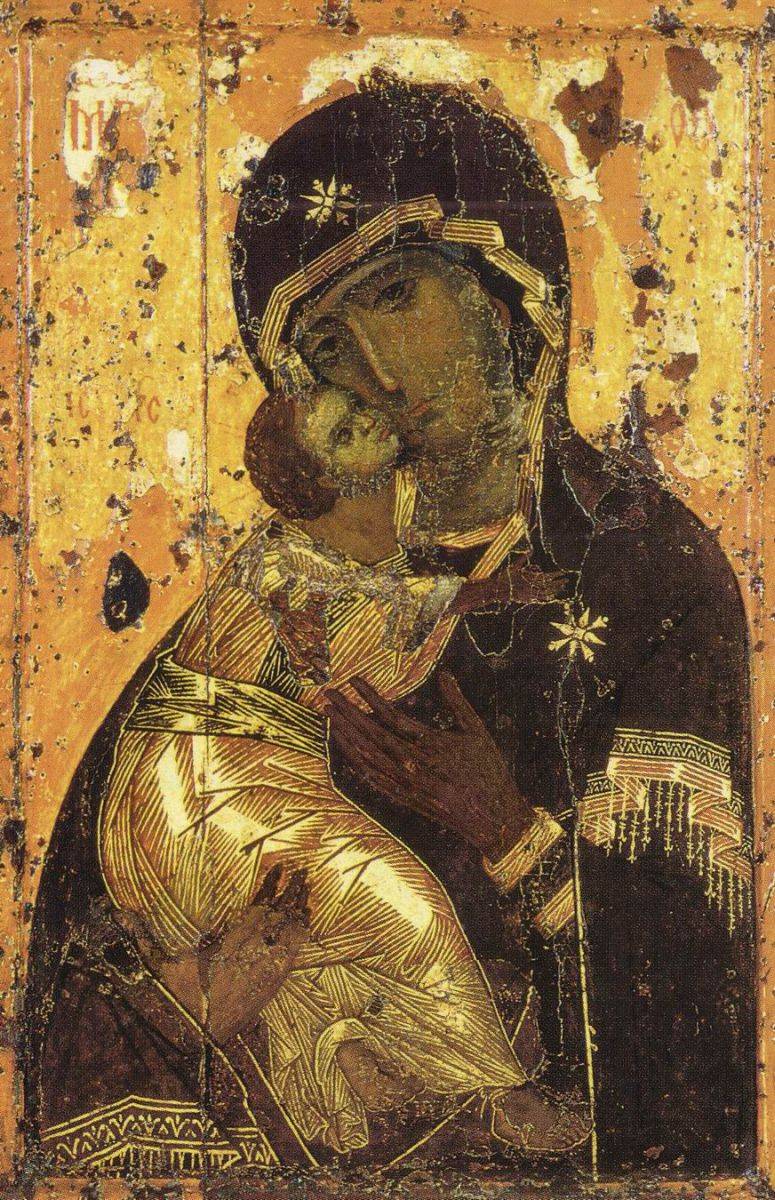
The icon of the Vladimir Mother of God, to whom the miraculous salvation of Russia from the invasion of Timur was attributed, is kept in the Tretyakov Gallery
According to the reports of Scheref ad-Din and Nizam ad-Din, this small town, he got "ore gold and pure silver, dimming moonlight, and canvas, and anti-Akhian homespun cloth ... brilliant beavers, a myriad of black sable, ermine .. lynx furs ... shiny squirrels and reds like ruby, foxes, as well as stallions who have not yet seen horseshoes. " These messages shed light on the mysterious retreat of Timur from the Russian borders: "Not we drove them, but God expelled them with his invisible power ... not our governors drove Temir-Aksak, not our troops to frighten him ...", the author was surprised "The Tale of Temir-Aksak", ascribing the miraculous deliverance of Russia from the hordes of Tamerlane to the miraculous power of the icon of the Mother of God delivered to Moscow from Vladimir.
Apparently, the Moscow Prince Vasily Dmitrievich managed to buy peace from Timur. From this year began the real agony of the Golden Horde. Russia stopped paying tribute to Tokhtamysh, who, like a hunted beast, rushed across the steppe. In search of money in 1396, he tried to seize the Genoese city of Cafu, but was defeated and fled to Kiev to the Grand Duke of Lithuania Vitovt. Since then, Tokhtamysh no longer had the strength for independent action, so in exchange for help in the war against Timur's appointees (Khans Edigei and Temir-Kutlug), he ceded the rights to Moscow Russia, considered the ulus of the Golden Horde, to Vitovt.
The situation seemed to favor the plans of the Allies, since Timur's victorious army in 1398 went into the Indian campaign. However, for Vitovt, this adventure ended in a cruel defeat in the Battle of Vorksl (12 in August 1399), in which, in addition to thousands of ordinary soldiers, 20 princes were killed, including the heroes of the Kulikovo battle, Andrei and Dmitry Olgerdovich, as well as the famous war governor Dmitry Donskoy Bobrok -Volynsky. Tokhtamysh was the first to flee from the battlefield, while Vitovt got lost in the forest during the retreat, from which he managed to get out only after three days. I think the name of Elena Glinskaya is known to readers. According to the legend, Vitovt managed to get out of the forest with the help of an ancestor of his mother Ivan IV, a certain Cossack Mamai, who was granted the princely title and the Clay tract for this service.
And Tokhtamysh, who was left without allies and deprived of the throne, roamed the Trans-Volga region After the death of Timur, he made the last attempt to return to the throne of the Golden Horde, was defeated by his brother Temir-Kutlug Shadibek and was soon killed at the lower reaches of Tobol.
For the campaign in Hindustan, Timur took 92 000 warriors. The number corresponded to the number of the names of the Prophet Mohammed — in this way Timur wanted to emphasize the religious character of a future war. This comparatively small army was enough for Tamerlan to completely defeat India and capture Delhi. The war elephants did not help the Hindus either: to fight them, Tamerlane’s warriors used buffaloes, to whose horns bundles of burning straw were tied. Before the battle with the sultan of the city of Delhi, Mahmud, Timur ordered 100 to kill thousands of captured Indians, whose behavior seemed suspicious to him. This decision, I suppose, was not easy for him - since there were many skilled craftsmen among the slaves, whom Tamerlane always considered the most valuable part of military booty. In many other cases, Timur preferred to take the risk of throwing only a small part of the army into battle, while the main forces escorted a million captured artisans and a wagon train full of gold and jewels. For example, in January, 1399 in the gorge, called the Ganges font, was opposed by 10 thousand hebras to the 1,500 squad of Timur. However, only 100 people, led by Tamerlane himself, entered into battle with the enemy: the rest were left to protect the booty, which consisted of camels, cattle, gold and silver jewelry. The horror before Timur was so great that this squad was enough to turn the enemy to flight. In early February, 1399. Timur received news of insurrections in Georgia and the invasion of Turkish Sultan Bayazid’s troops into the frontier possessions of his empire, and in May of the same year he returned to Samarkand. A year later, Tamerlan was already in Georgia, but he was in no hurry to launch a war against Bayazid, entering into a correspondence with the ruler of the Ottomans, in which "all allowed by eastern diplomatic forms of abuse were exhausted." Timur could not ignore the fact that Bayazid became famous in victorious wars with the "infidels" and therefore enjoyed high prestige in all Muslim countries. Unfortunately, Bayazid was a drunkard (i.e., a violator of one of the main commandments of the Koran). In addition, he patronized the Turkmen Kara-Yusuf, who made his trade robbery of caravans of two sacred cities - Mecca and Medina. So there is still a plausible excuse for war.
Bayazid was a worthy opponent of the invincible Tamerlane. He was the son of Sultan Murad, who crushed the kingdom of the Serbs in the battle of Kosovo (1389), but he himself died at the hands of Milos Obilic. Bayazid never defended or retreated, was swift in campaigns, appearing where he was not expected, for which he was nicknamed Lightning. Already in 1390, Bayazid captured the last Greek stronghold in Asia to Philadelphia, the following year he took Thessaloniki and undertook the first unsuccessful trial of the siege of Constantinople. In 1392, he captured Sinop, in 1393, he conquered Bulgaria, and in 1396, his army defeated a hundred-thousandth army of the crusaders at Nikopol. Inviting 70 to the most distinguished knights for a feast, Bayazid then let them go free, offering to recruit a new army and again fight with him: "I liked to win you!" In 1397, Bayazid invaded Hungary, and now was preparing to finally seize Constantinople. Emperor Manuel, leaving the vicegerent in the capital, John Palaeologa, traveled to the yards of the Christian monarchs of Europe, in vain asking for their help. On the Asian shore of the Bosphorus, two mosques were already towering, and Ottoman ships dominated the Aegean Sea. Byzantium was supposed to die, but in 1400, Timur's troops moved west. Initially, the fortresses of Sebaste and Malatia in Asia Minor were captured, then military operations were transferred to the territory of Syria, a traditional ally of Egypt and the Turkish sultans. Learning about the fall of the city of Sivas, Bayazid moved his army to Caesarea. But Timur had already gone south, rushing to Aleppo and Damascus, and for the first time in his life, Bayazid did not dare to follow the enemy: after spending his forces on a clash with the Arabs, Timur would go to Samarkand, - he decided, and turned his troops back. Aleppo ruined the self-confidence of his commanders, who dared to withdraw their troops for battle outside the city walls. Most of them were encircled and trampled by elephants led by Indian drovers, and only one of the Arab cavalry units managed to get through to the road to Damascus. Others rushed to the gate, and Tamerlane's soldiers rushed into the city after them. Only a small part of the Aleppo garrison managed to hide behind the walls of the inner citadel, which fell several days later.
The vanguard of the Central Asian army under the command of the grandson of Timur Sultan-Hussein went to Damascus after the detachment of Arab cavalry retreating from Aleppo and withdrew far from the main forces. In an effort to avoid assault, the inhabitants of Damascus invited the prince to become the ruler of the city. Sultan-Hussein agreed: he was the grandson of Tamerlan from his daughter, and not from one of his sons, and, therefore, he had no chance to occupy a high position in the empire's grandfather. The Arabs of Damascus hoped that Timur would spare the city ruled by his grandson. However, Tamerlane did not like such an arbitrariness of his grandson: Damascus was besieged and during one of the raids Sultan-Hussein was captured by his grandfather, who ordered him to be punished with sticks. The siege of Damascus ended with the city residents, having received permission to pay off, opened the gates to Tamerlane. Further events are known from the report of the Armenian chronicler Thomas Metsopsky, who, referring to eyewitness accounts, claims that the women of Damascus addressed Timur with a complaint that "all men in this city are villains and homosexuals, especially the mullahs." Timur didn’t believe at first, but when "the wives in the presence of their husbands confirmed everything that was said about the illegal acts they were doing," he ordered his troops: "I have 700 000 people today and bring 700 000 towers to me tomorrow and build 7 towers for me. will bring his head, his head will be cut off. And if someone says: "I am Jesus," - not to approach him ... "The army carried out his order ... The one who failed to kill and cut off his head, bought it for 100 tang and gave a bill. "As a result of these events, fires began in the city, in which even mosques were killed, and nilsya only one minaret, which, according to tradition, "should get Jesus Christ, when you have to judge the living and the dead."
After the fall of Damascus, the sultan of Egypt Faraj fled to Cairo, and Timur, after a two-month siege, took Baghdad. True to his habits, he also erected 120 towers from human heads, but he did not touch the mosques, educational institutions and hospitals. Returning to Georgia, Tamerlane demanded from Bayazid to issue the already familiar Kara-Yusuf, and, having been refused, in 1402 he moved his troops into Asia Minor. Having besieged Ankara, Timur was expecting Bayazid here, who soon appeared to defend his possessions. The battlefield Tamerlane chose at a distance of one transition from Ankara. Numerical superiority was on the side of Timur, however, the battle was of an extremely stubborn nature, with the Serbs, who repelled the impact of Tamerlan’s army’s right wing, showed the greatest resistance in the ranks of the Turkish troops. But the attack of the left wing was successful: the Turkish commander Perislav was killed, and part of the Tatars, who were part of the Turkish army, went over to Timur. With the next blow, Timur tried to separate the violently fighting Serbs from Bayazid, but they managed to break through the enemy ranks and joined up with the reserve units of the Turks.
“These dandy fights are fighting like lions,” said the surprised Tamerlane himself moved against Bayezid.
The head of the Serbs, Stefan, advised the Sultan to flee, but he decided to stay with his Janissaries on the spot and fight to the end. The sons of Bayazid left the sultan: Mohammed retreated to the mountains of the northeast, Isa - to the south, and the Serb-guarded Suleiman, the eldest son and heir to the sultan, went west. Pursued by the grandson of Timur Mirza-Mohammed-Sultan, he nevertheless reached the city of Brouss, where he boarded the ship, leaving the winners with all the treasures, the library and the harem of Bayazid. Bayazid himself before the night reflected the attacks of Tamerlane’s superior forces, and when he decided to flee, his horse fell and the ruler, who had frightened the whole of Europe, fell into the hands of the powerless Khan of the Jagatai ulus Sultan Mahmud.
"God must have little appreciation of power on Earth, since he gave one half of the world to the lame and the other to the crooked," said Timur, seeing an enemy who had lost an eye in an old battle with the Serbs.
According to some sources, Tamerlane put Bayezid in an iron cage, which served as a footboard for him when riding a horse. According to other sources, by contrast, was very gracious to the defeated enemy. Anyway, in the same 1402, Bayazid died in captivity.
“The human race is also not worth it, in order to have two leaders, it must be managed by only one, and that is ugly, like me,” Timur said about this.
There is information that Timur intended to put an end to the Ottoman state forever: to continue the war, he demanded warships from Emperor Manuel 20, he also asked for Venice and Genoa. However, after the battle of Ankara, Manuil did not fulfill the terms of the treaty and even helped the defeated Turks. It was a very short-sighted decision, which resulted in the fall of the Byzantine Empire through 50 years after the events described. After the victory over Bayazid, Timur was at the zenith of fame and power, not one state in the world had the power to resist him. The state of Tamerlane included Maverannahr, Khorezm, Khorassan, Transcaucasia, Iran and Punjab. Syria and Egypt recognized themselves as vassals of Timur and minted a coin with his name. After appointing the rulers in the abandoned areas and ordering to rebuild Baghdad, Tamerlane went to Georgia, the king of which, having offered a tribute, managed to avoid a new devastating invasion. At that time, Timur received ambassadors from the Spanish king and entered into correspondence with the monarchs of France and England. From Timur’s letters it follows that he did not intend to continue the war in the West, proposing to King Charles VI of France “to ensure the freedom of trade relations for the merchants of both countries by concluding an agreement or an agreement”. Returning to Samarkand, Tamerlane surrendered to his main passion, i.e. to decorate the beloved Samarkand, ordering the craftsmen, taken from Damascus, to build a new palace, and to the Persian artists to decorate its walls. However, he couldn’t sit at home for a long time: after 5 months after Timur returned, he headed east for the 200-thousandth army. The goal of the last campaign was China. According to Tamerlane, the war with the Chinese pagans was to serve as an atonement for the Muslim blood shed by his army in Syria and Asia Minor. However, Timur’s desire to crush the last great state located at the borders of the state created by him should be considered the more likely reason for this campaign, and thereby ease the rule of his successor. 11 February 1405 city Timur arrived in Otrar, where he caught a cold and became fatally ill. Nizam ad-Din reports that "since Timur’s mind remained healthy from beginning to end, Timur, in spite of severe pains, did not cease to inquire about the condition and position of the troops." However, realizing that his "illness was stronger than drugs," Timur bade farewell to his wives and emirs, appointing his grandson from Jehangir's eldest son, Pir-Mohammed, to succeed him. 18 February the heart of the great conqueror stopped. The associates of Timur tried to conceal the death of the leader in order to carry out at least part of his plan and strike at the Mongolian ulus of Central Asia. Failed and this. Timur ruled 36 for years, and, as Scheref ad-Din noted, this number coincided with the number of his sons and grandchildren. According to Tamerlan's "Pedigree," "the heirs of Amir Temir mainly killed each other in the struggle for power." Soon the multinational state of Timur crumbled into its constituent parts, at home the Timurids gave way to the rulers of other dynasties, and only in faraway India until 1807.
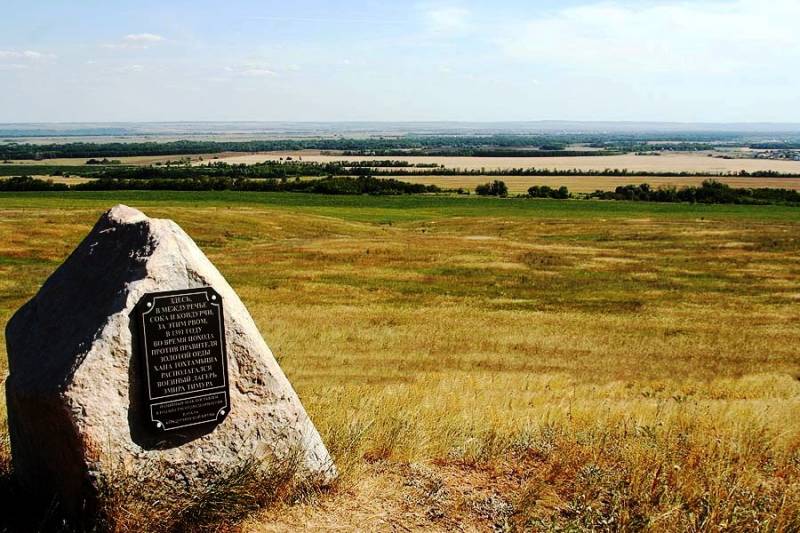
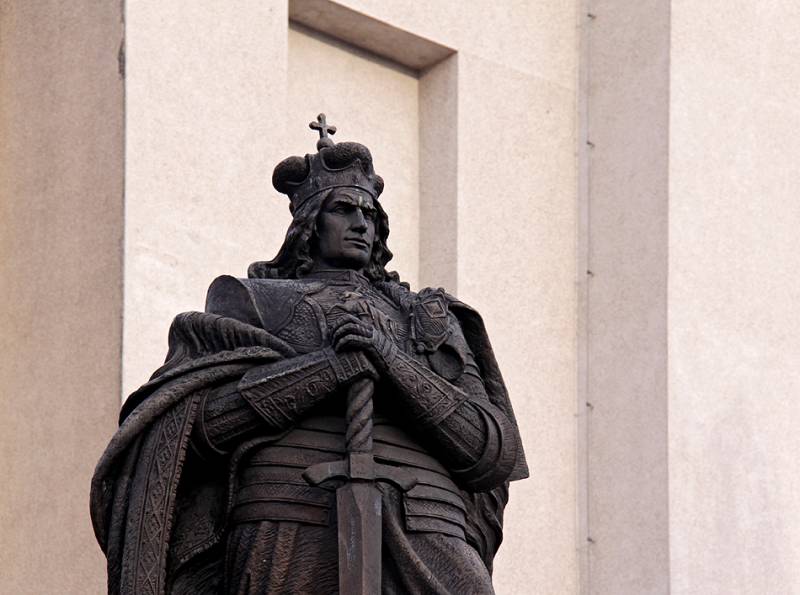
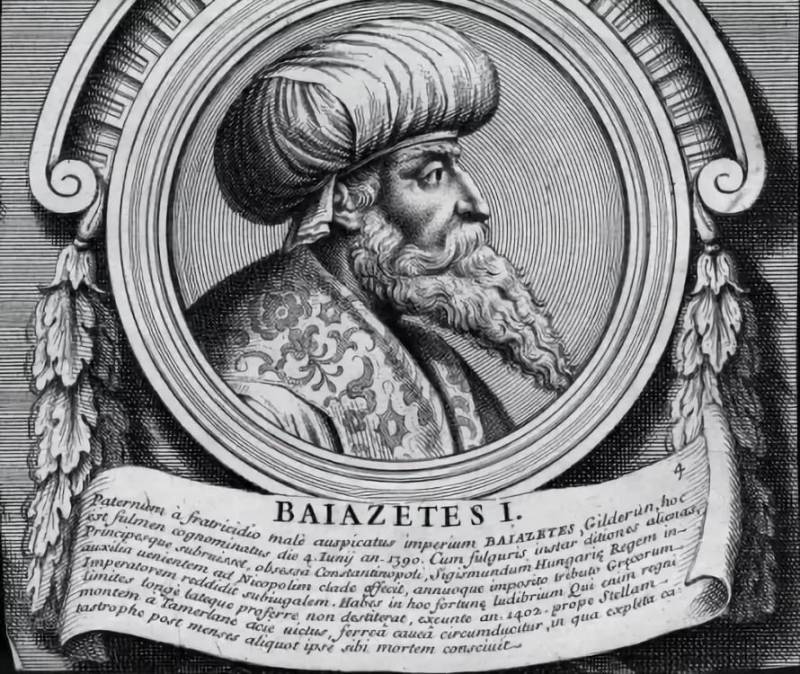
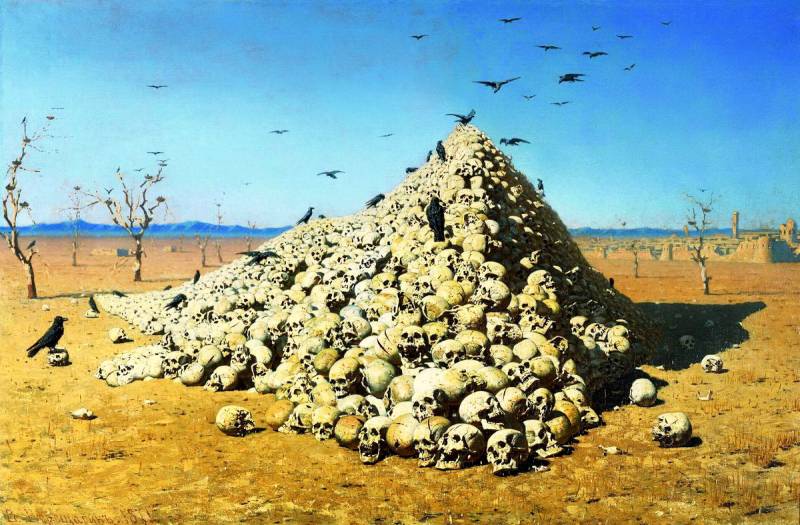
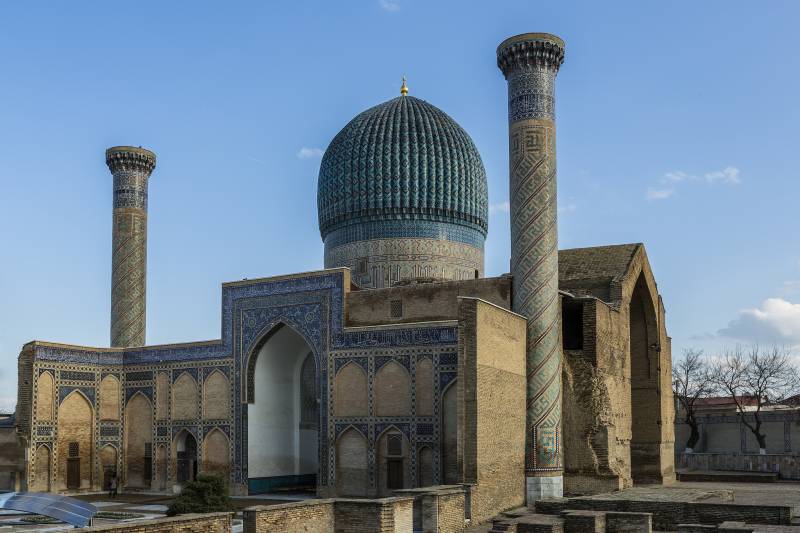
Information